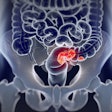The U.S. Joint Commission has issued an alert on the dangers of medical radiation, sending an unmistakable signal that radiology has entered its sights in a formal way. The announcement is a sign that imaging facilities will need to pay more attention to formalizing their procedures for protecting patients from unnecessary radiation dose.
Noting that the U.S. population's exposure to ionizing radiation has nearly doubled in the past two decades, the Washington, DC-based accreditation agency decried the fact that "any physician can order tests involving exposure to radiation at any frequency, with no knowledge of when the patient was last irradiated or how much radiation the patient received," in its August 24 statement.
The Joint Commission acknowledged that studies assessing medical radiation's risks rely on "currently unverified scientific assumptions," but said that recent studies have raised concerns about imaging overuse, particularly "in vulnerable populations such as children, young adults, and pregnant women." The nonprofit commission was founded in 1951 and currently accredits some 19,000 organizations, including hospitals, physicians' offices, disease-specific care programs, stroke centers, and healthcare staffing services in the U.S..
"Diagnostic imaging is a necessary medical tool, but it must be used with great care," said Joint Commission President Dr. Mark Chassin in a statement accompanying the release of the alert.
How did the commission's most powerful notice, a sentinel alert, come about today?
"There's no one single event or reason for the sentinel alert -- the issue has already been bubbling up in the press, it's been discussed in the medical community, consumers are becoming more aware of it," and the commission has also received complaints, said Ana Pujols-McKee, chief medical officer for the Joint Commission, in an interview with AuntMinnie.com. "We have been working on this for a little bit of time, but we felt that the timing is right to shine a light on the issue of radiation exposure." Exactly how that occurs will be the subject of substantial further discussion with the medical community, she added.
To ensure that medical radiation dose is minimized, unnecessary radiation exposure is eliminated, and a culture of safety pervades U.S. healthcare facilities, the commission will rely in part on requirements from the U.S. Centers for Medicare and Medicaid Services (CMS) that begins in January 2012.
Based on the Medicare Improvements for Patients and Providers Act (MIPPA) of 2008, the CMS rule will require accreditation of all nonhospital, freestanding facilities that provide advanced diagnostic imaging services, including CT, MRI, PET, and nuclear medicine services. California will implement even stricter requirements beginning in January 2013.
As CMS announced in February of this year, the following are the three accrediting agencies that fulfill CMS' requirements:
- The Joint Commission
- The International Accreditation Council (IAC)
- The American College of Radiology (ACR)
Specific actions recommended by the Joint Commission include the following:
- Use of non-CT imaging techniques including ultrasound, MRI, and collaboration between radiologists and referring physicians about the appropriate use of diagnostic imaging
- Adherence to the Nuclear Regulatory Commission's ALARA (as low as reasonably achievable) guidelines, in addition to guidelines from the Society for Pediatric Radiology, ACR, and Radiological Society of North America (RSNA)
- Assurance by radiologists that the proper dosing protocol is in place for the patient being treated, and review of all dosing protocols against the latest evidence at least every two years
- Expansion of the role of radiation safety officer to include patient safety relating to radiation and dosing, and education on proper techniques and equipment usage for all physicians and technologists who prescribe exams that use radiation or use the equipment
- Implementation of centralized quality and safety performance monitoring for all imaging equipment that may emit high amounts of radiation
Much of the discussion will revolve around the how and why of imaging tests, according to the commission. For example, facilities will need to take steps to eliminate avoidable radiation doses, and raise awareness among staff about radiation issues and the increased risks associated with cumulative radiation doses for patients who undergo repeated exams. There will be a new focus on safe technology and a culture of safety, the alert states -- requirements that are intertwined with existing standards addressing leadership, human resources, and the environment of care.
For example, the commission envisions more formality in the CT protocol process, recommending the creation of policies "delineating those responsible for approving changes to password-protected diagnostic imaging protocols and for monitoring new developments in diagnostic imaging," the alert states.
The policies will ensure that all physicians and technologists who prescribe exams or work with imaging equipment be educated on dosing and patient protection in the specific scanner models being used, in a process that provides for annual education, review, and competency testing, according to the agency.
How will these somewhat fluid and subjective requirements be translated into accreditation decisions? Sentinel alerts are issued to create awareness and turn the attention of organizations and their leaders to a safety concern, Pujols-McKee said. Previous alerts have addressed such issues as violence in healthcare facilities, maternal death, healthcare technology, anticoagulants, wrong-site surgery, medication mix-ups, healthcare-associated infections, and patient suicides.
In diagnostic imaging accreditation, Joint Commission "surveyors will be asking questions and having dialogue with the leaders about their approach to improving safety and making patients safe when they're having radiation-related diagnostic tests and treatments," she said. What matters is that the facilities "are thinking, are approaching, and are putting in place a plan."
"These are not new standards, and it's not an element of performance that's going to be exactly measured," Pujols-McKee said. "These are recommendations to the organization so that they can ... take a look at the diagnostic and therapeutic tests within their organization and for them to put in plan processes and guidelines that will help keep patients safe."
Will a comprehensive new diagnostic radiology program give the Joint Commission a leg up in the accreditation race? ACR spokesman Shawn Farley told AuntMinnie.com by telephone that he welcomes the commission's formalization of its program, but added, "obviously we're the oldest and most widely recognized organization for medical imaging and radiation oncology, and we're quite proud of our record on that."
Pujols-McKee said she welcomes the ACR as a "good partner" in providing a safer environment for medical imaging, but that the Joint Commission has no designs on competing or establishing territory in accreditation. Rather, she said, the aim is to collaborate.
The full text of the August 24 sentinel alert can be accessed on the Joint Commission website.




















